Headlines
- Advanced Footcare Solutions: Use Cases Explained
- Keeping Customers Covered: How Pharmacies can address the Summer Burn Surge - A clinical and practical guide for pharmacy teams
- Fleming Medical Achieves ISO 13485 Certification – Reinforcing Our Commitment to Patient Safety and Quality
- Gentle Daily Ear Care with Medicare Ear Spray
- Breathe Easy with Medicare Nasal Spray
Carpal Tunnel Syndrome: Symptoms & Treatment
03 August 2022

Numbness, pins and needles or pain in the fingers, hands or arms are all symptoms of carpal tunnel syndrome and shouldn't be taken lightly.
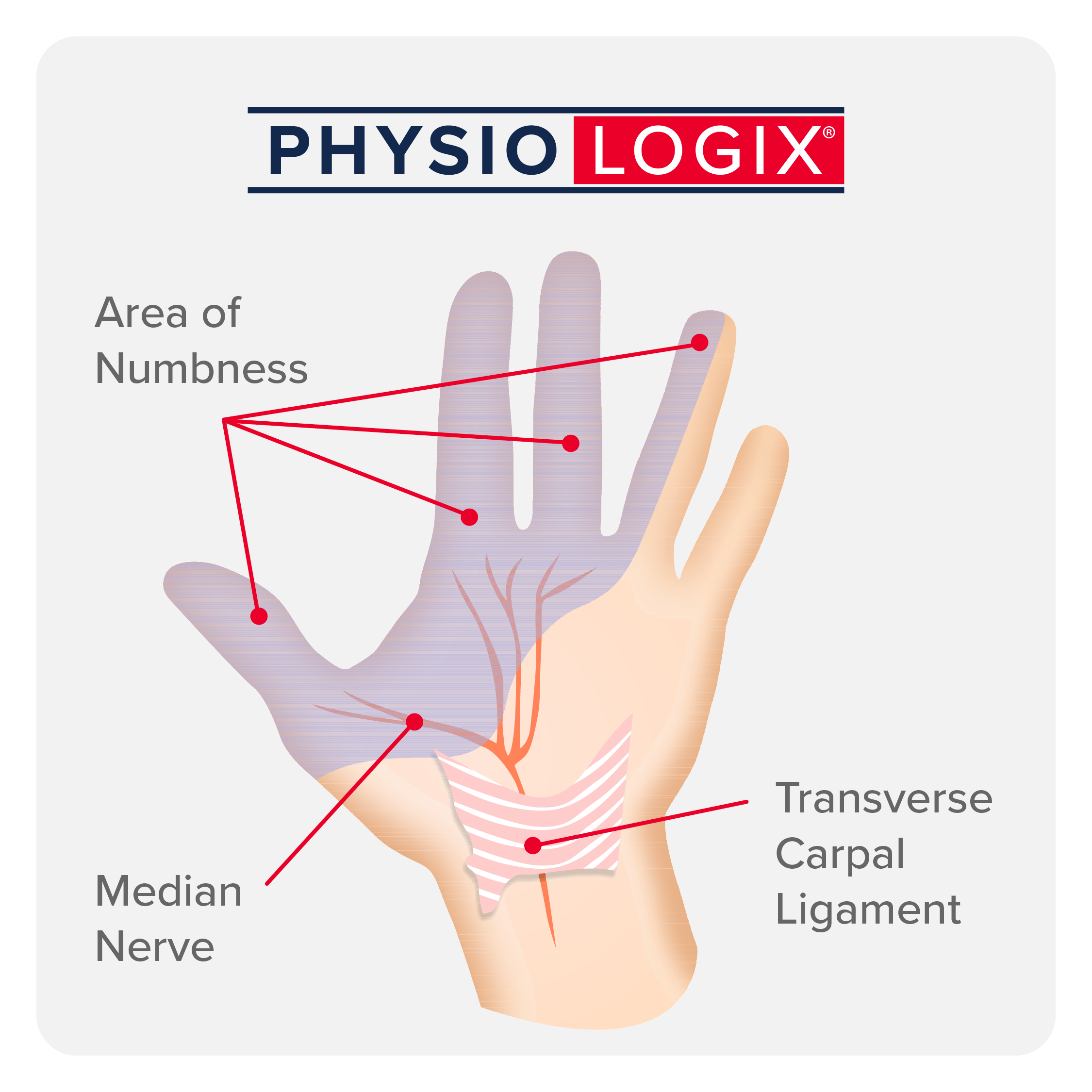
Carpal Tunnel Syndrome is caused by pressure being put on the median nerve; a nerve that provides motor functions to the forearm, wrist and hand. This median nerve travels the full length of the arm and passes through the carpal tunnel in the wrist, ending in the hand. The carpal tunnel is located where the had meets the forearm and is covered by a strong ligament, the transverse carpal ligament.
Carpal Tunnel Symptoms:
- Numb sensation in the hands
- Having a weak grip and experiencing general weakness in the hands
- Pains/aches in the fingers, hand or arm
- Burning/itching sensation in your palm or fingers.
Carpal Tunnel Causes:
Carpal tunnel occurs when fluid pressure in the carpal tissues increases. If you are overweight, more fluid is carried, increasing your risk of developing carpal tunnel syndrome. Pregnant women are more at risk as hormonal changes can trigger fluid retention, causing swelling. Other possible causes include fractures to the wrist, doing repetitive hand and wrist movements over a long period of time and engaging in activities that put stress on the wrist such as volleyball and piano.
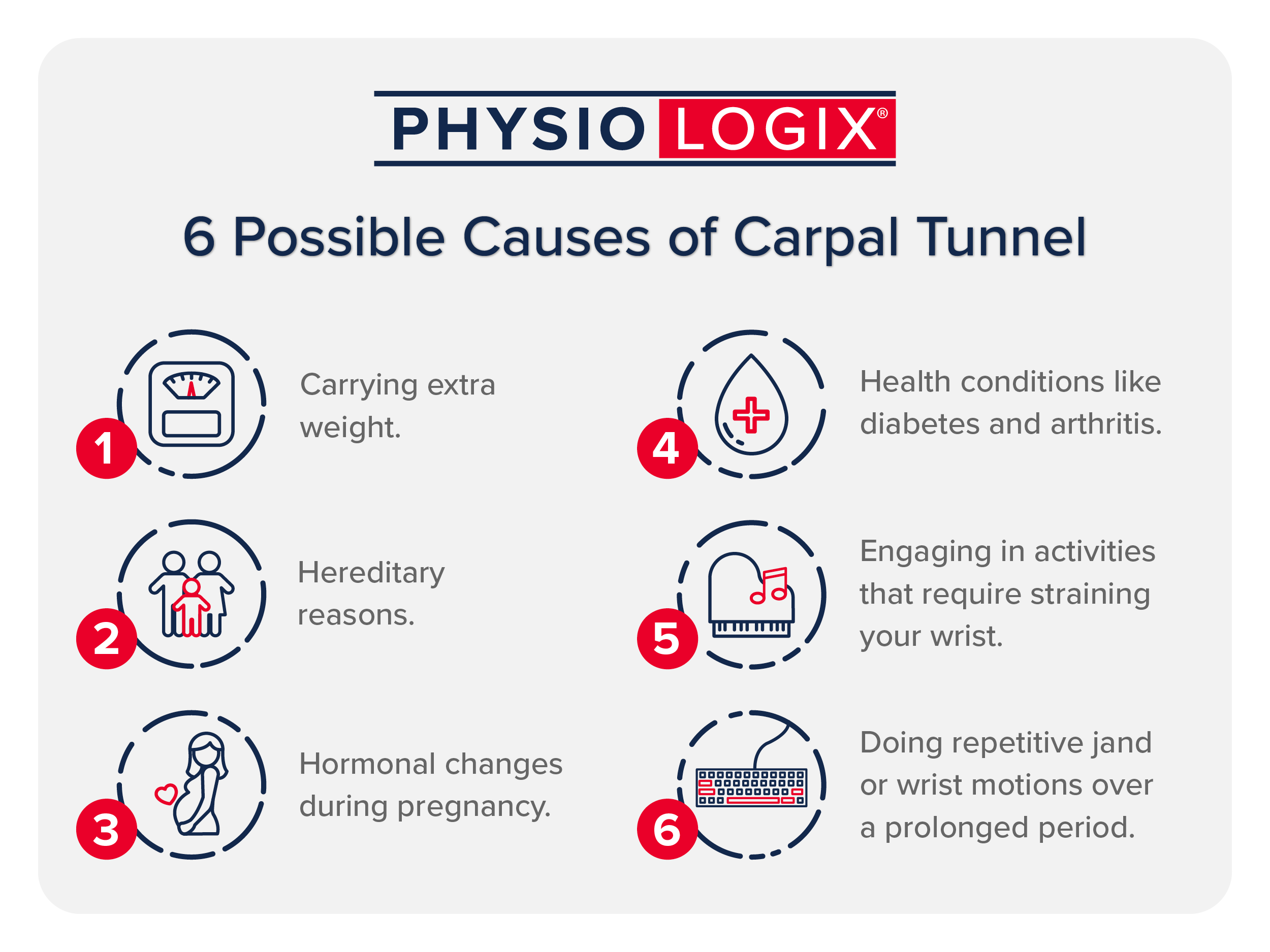
Treating Carpal Tunnel Syndrome:
Having carpal tunnel syndrome can really impede simple day-to-day activities including driving, typing, writing and evening scrolling on your mobile phone. Luckily, there are many different treatment options to help relieve symptoms. The Physiologix ultimate support range offers firm compression and superior support. It uses AIRFLEX technology which is an ultimate material that provides the optimal level of compression and heat retention to help improve blood circulation and reduce pain. Our Physiologix range has 2 supports to treat carpal tunnel syndrome.
Physiologix Ultimate Carpal Tunnel Brace: One Size
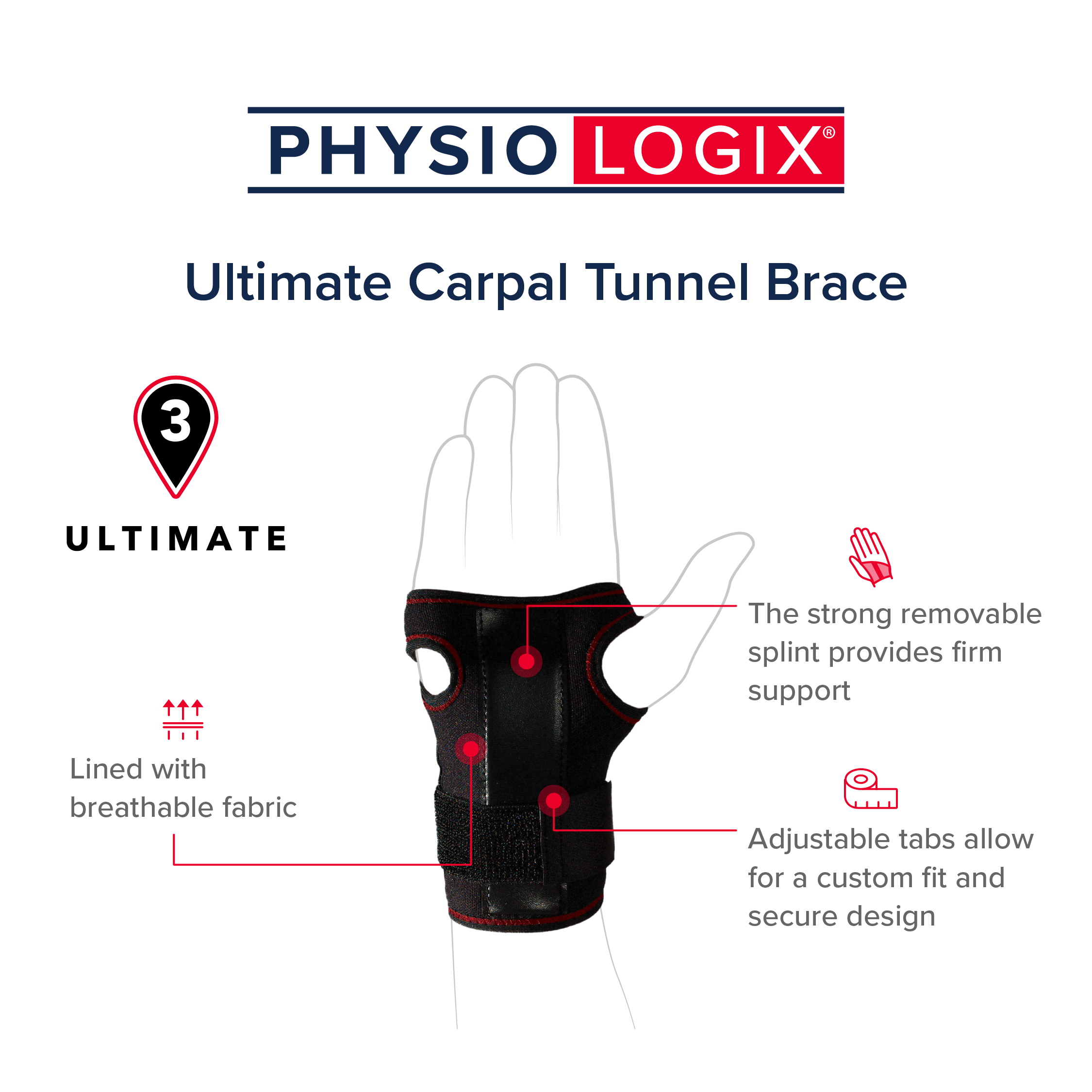
The one size carpal tunnel brace offers firm compression and support to the wrist and lower arm. With adjustable tabs and wraparound tension straps, the support can be comfortable fitted to suit your needs of support.
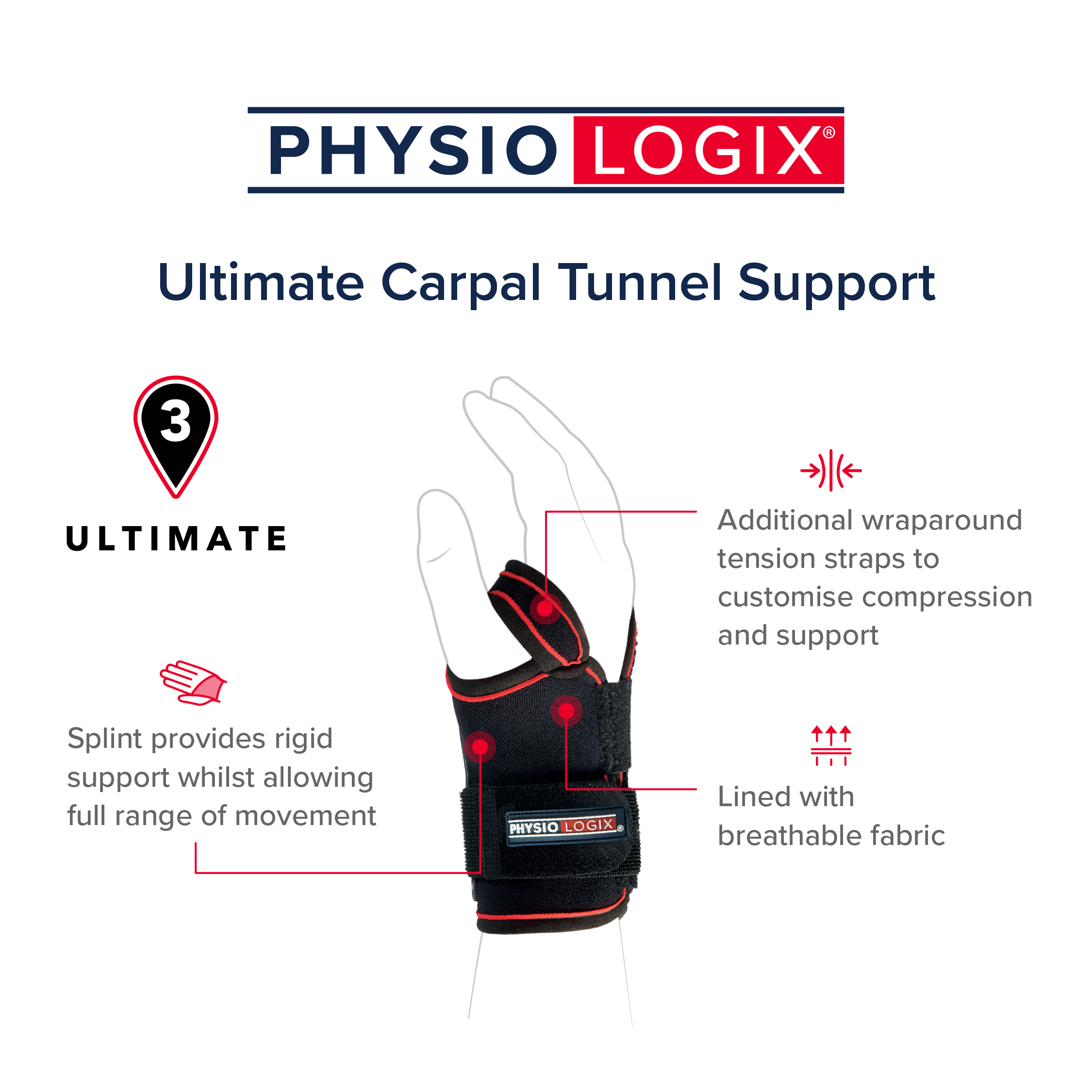
These supports are left and right hand specific. The splint allows full range of movement while providing strong support to the wrist. The support uses AIRFLEX technology and comes with additional straps to customise the fit.
These carpal tunnel braces can be used to treat other conditions including arthritis, tendonitis, sprains and strains to the wrist/hand. It is a good idea to wear a support during the night as your hands are in a relaxed position. It is recommended to wear the support for 16 hours per day and to refrain from any harsh activity that involves straining the wrist/ arm area when truing to relieve symptoms of carpal tunnel syndrome.
Kinesiology Tape:
Kinesiology tape is a multi-purpose tape that can be very effective in treating carpal tunnel syndrome when applied correctly. Its elasticity and thickness allow it to facilitate strength to the wrist without restricting movement. Along with carpal tunnel syndrome, kinesiology tape can also be effective in treating other conditions and injuries such as tennis elbow, ankle sprains and back pain. Check out our Kinesiology Tape Blog to find out more benefits of the tape and great application tips for the best results. If applied correctly, kinesiology tape can be extremely effective, so lets look at an easy step-by-step guide to treat carpal tunnel syndrome with kinesiology tape.
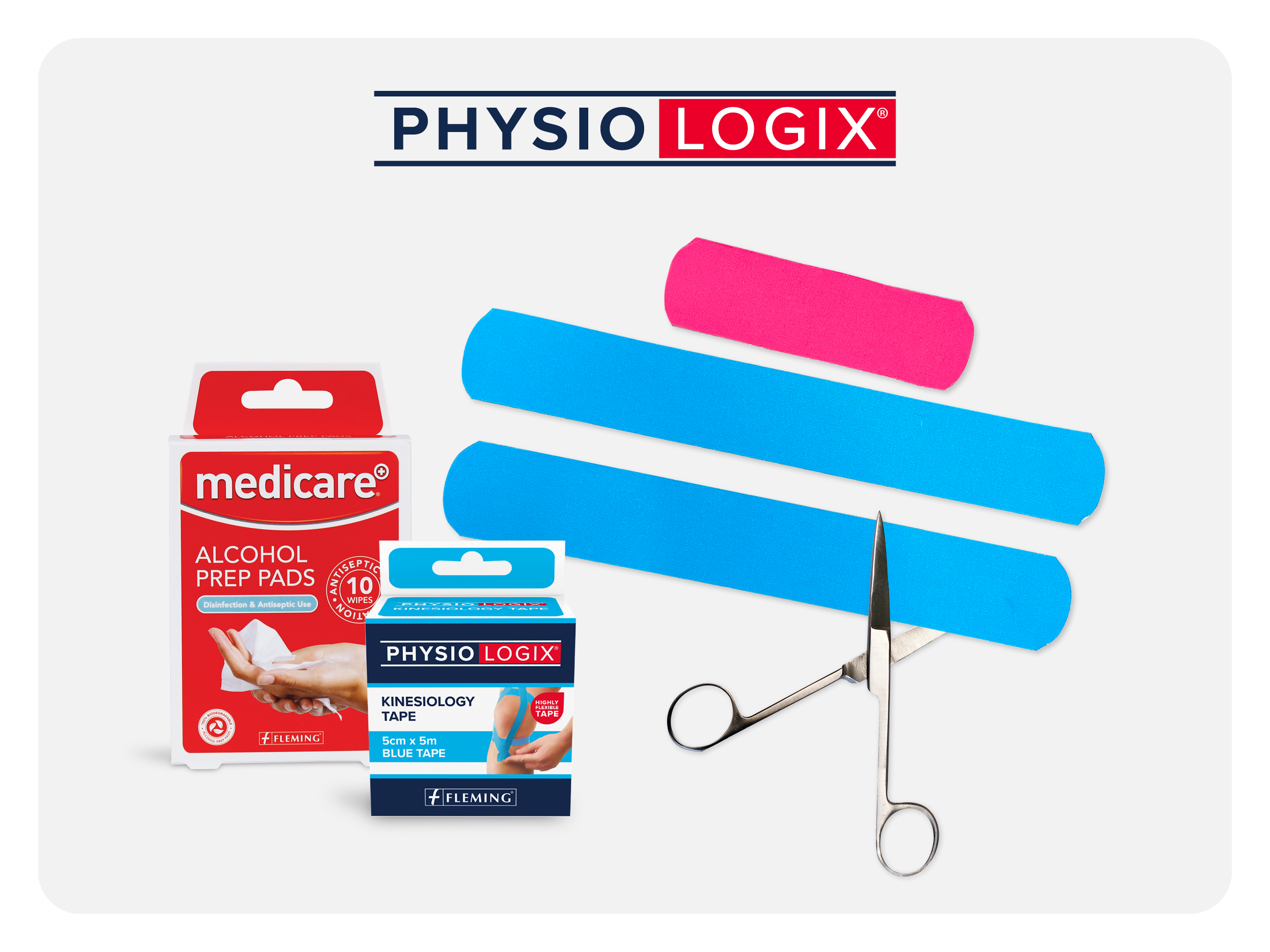
Prepare The Skin
Using an Alcohol Prep Pad, clean the arm and wrist area where the tape is to be applied. Shave the area, if possible, for the best adhesion.
Prepare Your Kinesiology Tape:
- Measure 3 pieces of kinesiology tape. You will need 2 long strips (measured from your knuckles to your elbow) and 1 short strip (to fit around your wrist). Round each piece of the tape using a sharp scissors. The Medicare Sharp Dressing Scissors features sharp, strong cutting edges for precise cuts.
- Once the edges have been rounded, take the last two inches of one side of the long pieces of tape. Fold it and cut 2 small circles. These incisions are where the index and middle finger will fit through. Repeat this step again for the other long piece of tape.
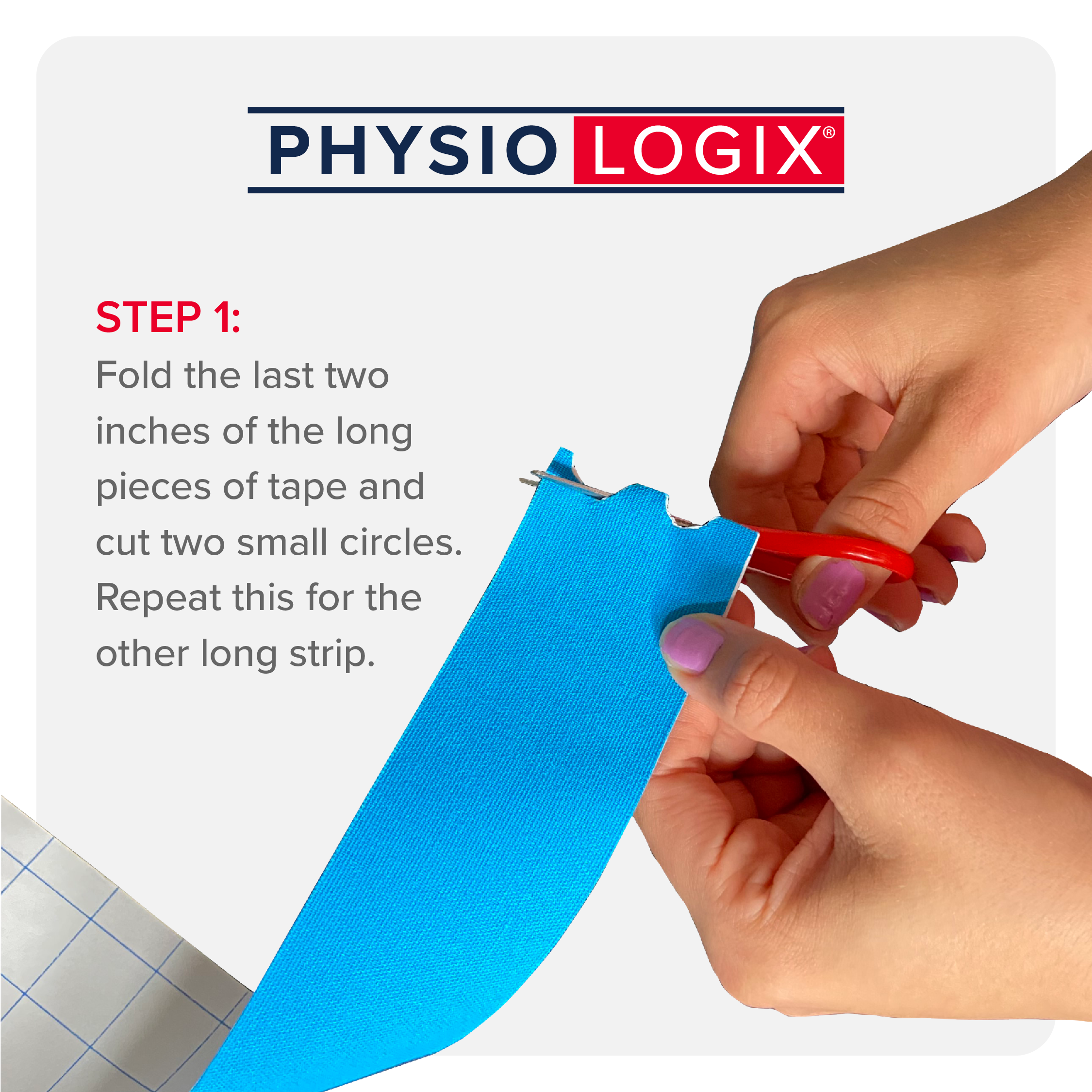
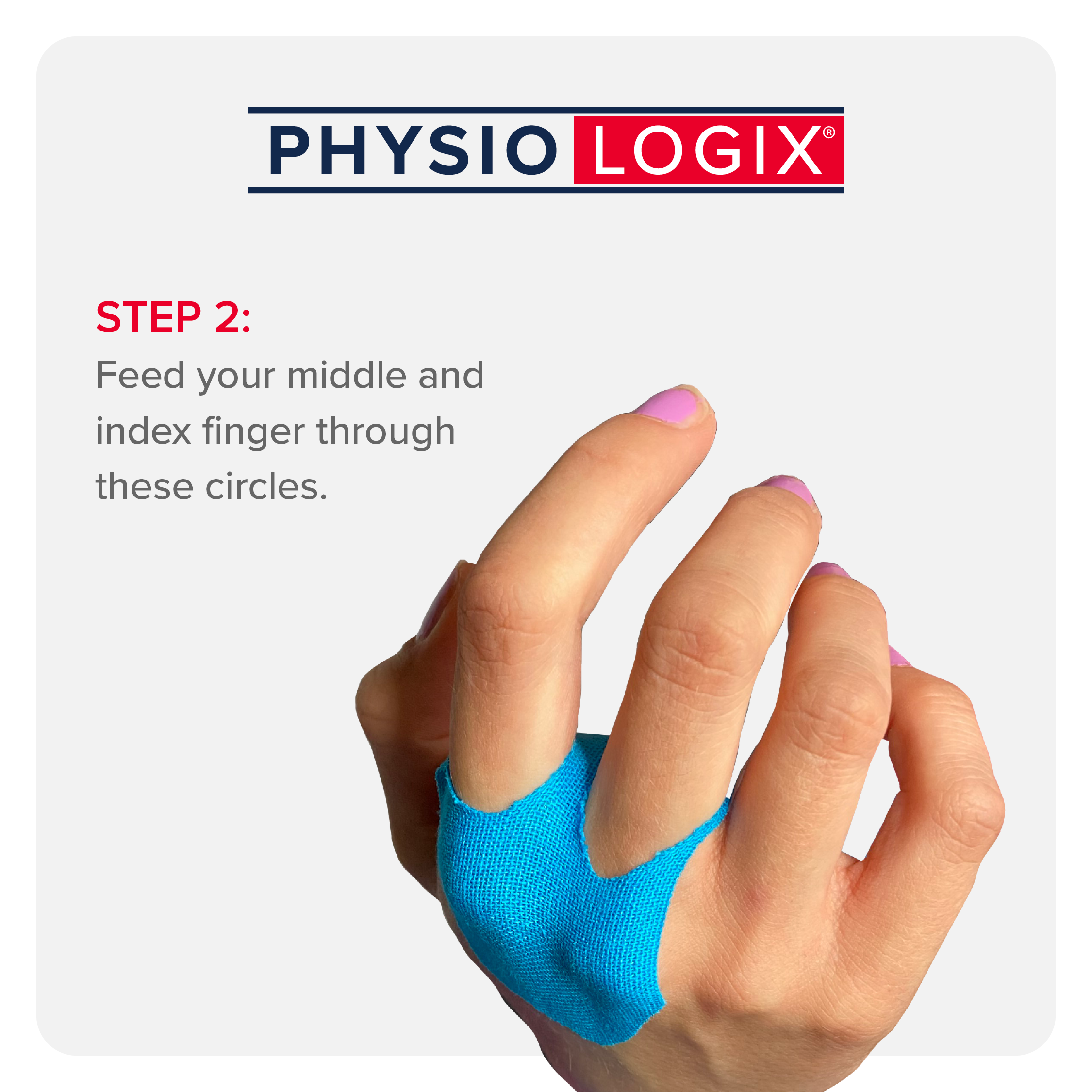
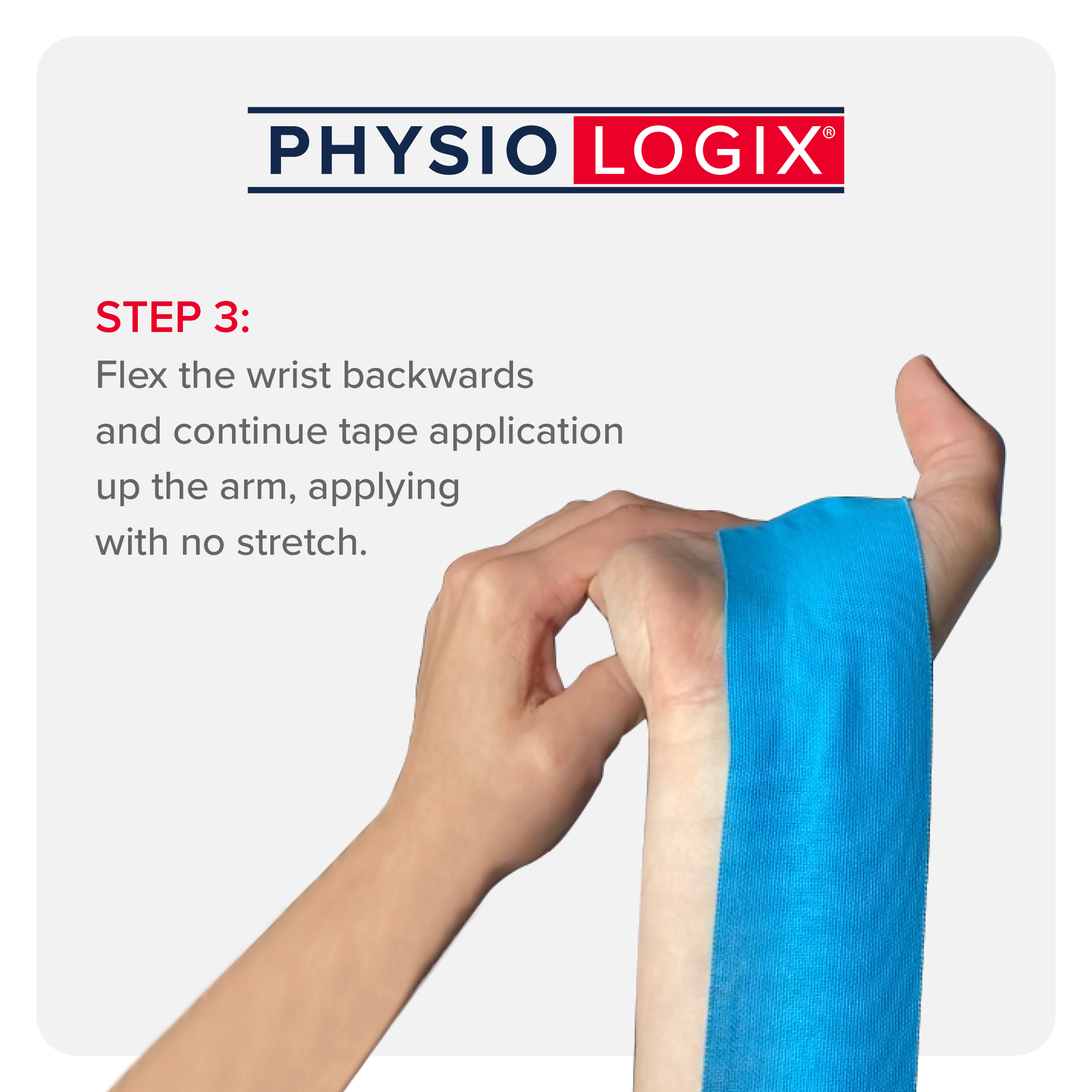
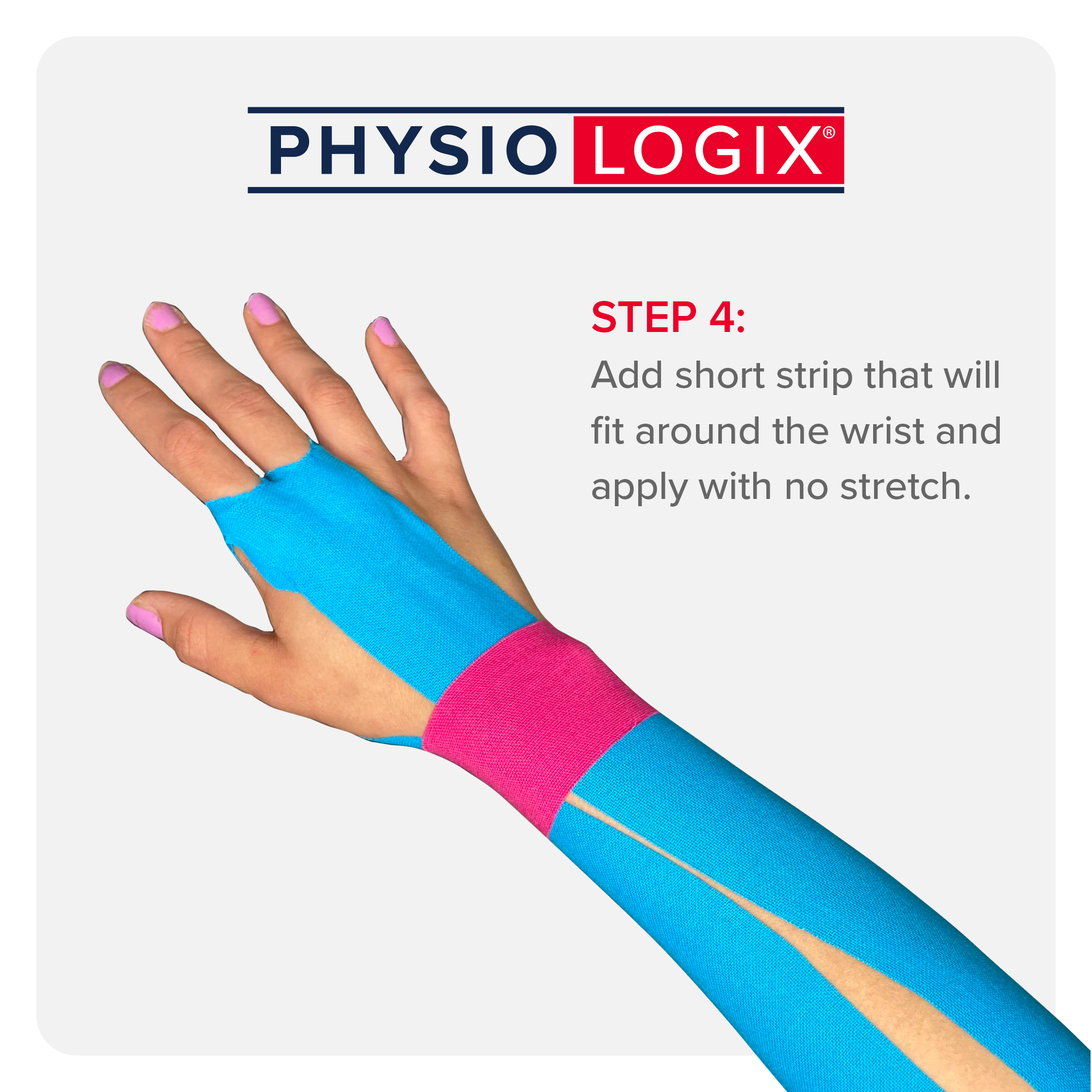
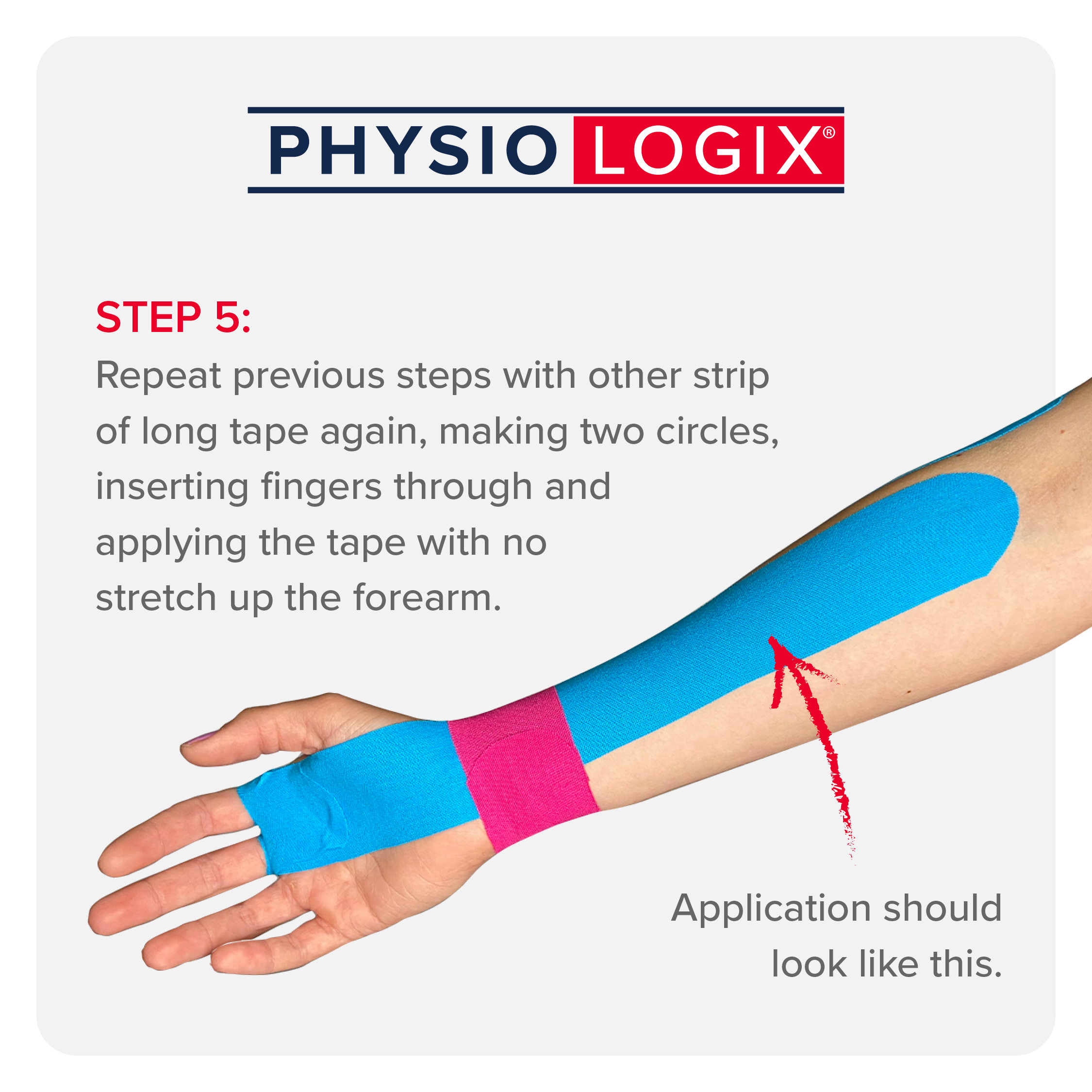
- Using one of the long pieces of tape, take the side with two circles as an anchor and feed it through the index and middle finger as shown above in the picture. *Avoid touching the sticky adhesive*
- Flex the wrist backwards and continue with tape application up the arm. Ensure to apply tape with no stretch . Once in place, rub the tape as heat will improve adhesion.
- Repeat step 2 using he other long strip of tape. This piece will go on the forearm. When applying this piece, flex the wrist the opposite direction to before (forwards) and stick the piece down, again with no stretch.
- Using the final piece of tape (the short one), simply tear off the backing and apply it around the wrist area with no stretch.
Kinesiology tape can be worn for up to 4 days if treated correctly.
Shop Physiologix Kinesiology Tape Should I Use Ice Or Heat To Treat Carpal Tunnel Syndrome?
The answer is both. Ice and heat are great ways to give temporary relief to the arm and wrist area and are most effective when used alongside taping or a carpal tunnel brace. Ice will significantly help to suppress any swelling or pain felt in the area. It works by reducing pressure on the median nerve which will relieve symptoms. Heat on the other hand, can increase blood circulation and oxygen to the area promoting healing. It is advised that after icing the area for 2-5 days to start alternating between hot and cold therapy to aid relief and prompt recovery. The Medicare Reusable Hot/Cold Pack is perfect as it can be put in the freezer for cold therapy and put in the microwave to heat for heat therapy. Once frozen, the pack stays cold for 2 hours and when heated, it remains hot for 40 minutes.
Top Tips for Prevention:
- Keep your wrist in a neutral position when possible
- When holding objects, use your whole hand rather than your fingers
- Maintain a healthy weight
- When typing or playing an instrument, avoid putting strain on your wrists by elevating your hands
- Keep your hands warm
- Take short but frequent breaks from strenuous activities that involve your hand/wrist
Useful Resources:
- https://www.healthline.com/health/carpal-tunnel-syndrome#diagnosis
- https://www.webmd.com/pain-management/carpal-tunnel/carpal-tunnel-syndrome

 Fleming Medical UK
Fleming Medical UK
